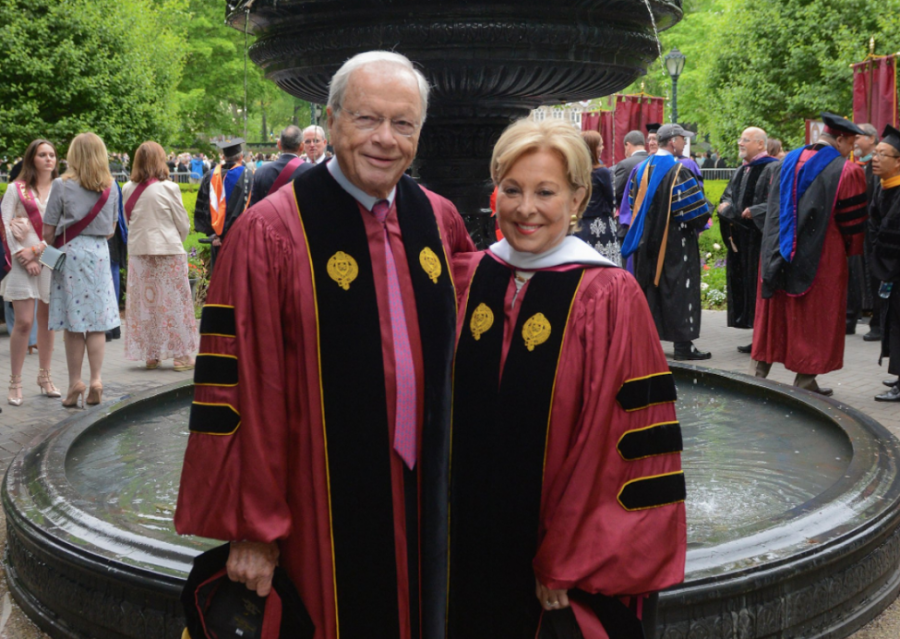By The Editorial Board
Despite offering a high quality education in an expensive city, Fordham struggles to remain affordable to low income students. In 2015, The New York Times ranked Fordham 164 out of 200 universities on the College Access Index reviewing an institution’s commitment to making college affordable to low-income students. In April of this year, a non-partisan think-tank study found that Fordham is the seventh most expensive university for low-income students to attend.
The university provides a considerable amount of aid in the form of merit scholarships to make up for its hefty $60,000 plus price tag. In the 2015-2016 academic year, Fordham awarded about $260 million in total financial aid and about $160 million in grants and scholarships. Scholarships and financial aid are awarded on a merit or need basis depending on a student’s eligibility. The Presidential Scholarship is awarded to the top 20 admitted students each year and gives full tuition and room for four years. The Semifinalist Scholarship is awarded to finalists or semifinalists in the National Merit or National Hispanic Recognition Scholarship programs in the top two to three percent of all admitted students and gives full-tuition for four years. The Dean’s Scholarships are given to those among the top 10 percent of all admitted students.
Money to these merit scholarships is pouring in. Two weeks ago, Fordham alumni and notable donors Maurice and Carolyn Dursi Cunniffe donated another $20 million to Fordham. The money has been committed to funding Presidential Scholarships.
The Presidential Scholarship, which is being renamed the Maurice and Carolyn Cunniffe Presidential Scholars Program, usually goes to students who have the most impressive report cards and SAT scores. These intelligent students are thus highly likely to have attended some of the nation’s more premier institutions where they could be afforded the tools to help them achieve near perfect marks on their standardized tests and 4.0 GPAs.
It is, of course, important to award high-achieving students large scholarships in order to enhance the talent pool of the student body and give such students an incentive to choose Fordham over a myriad of other opportunities. Charitable giving to the university of any nature is to be commended and accepted graciously. However, in a climate where a lack of diversity and understanding in the student body has resulted in in insensitive remarks and racial bias incidents, the imbalance between the number of merit-based scholarships and scholarships specifically targeted to high school students who live in less advantaged areas. is more noticeable than ever.
Some donors have made the effort to bridge the gap between the students that have resources and those that need additional assistance. Last year, Alex Trebek, host of the popular and long running game show “Jeopardy.” created and donated $1 million to the Alex Trebek Endowed Scholarship, a need-based program for students who live in North Harlem. The university also offers a Metro Grant, which is awarded to students who commute from a permanent residence in New York City with a valid FAFSA and full-time enrollment.
By disproportionately allocating more money to high school students with high test scores alone, Fordham is missing out on the opportunity to provide opportunities for those who cannot afford tuition. Fordham should provide more financial opportunities for less privileged students who have the potential for greatness but lack the resources. More need-based scholarships would also open Fordham up for these students and create a more diverse student body, for which Fordham continually advocates for.
All donations for scholarships are important for students to attend such an expensive institution, but college acceptance is not a meritocracy. As a Jesuit institution, Fordham can do more to bridge the divide. Creating more need-based scholarship opportunities for students and judging merit-based scholarships on other attributes of the students’ academic credentials will target a more varied student population.






































































































































































































Ann • May 10, 2017 at 6:20 am
Students with high test scores and impressive high school transcripts are highly probable to be successful students and successful future employees or business owners therefore more likely to contribute significantly to future scholarship funds and endowments. The Cunniffe’s for example are both previous scholarship recipients. Scholarships are not just meant to reward the student. It’s business and those students are investments for the future of the university to make other scholarships and aid possible.
Karen • Nov 16, 2016 at 1:23 pm
College is a meritocracy
Lmb • Nov 3, 2016 at 10:51 pm
Better question: where does your tuition money go?
Gerard K. Meagher • Nov 2, 2016 at 2:46 pm
The best should get the scholarships.
Halina • Nov 2, 2016 at 5:25 pm
Gerard, Of course the “best” are gonna get the scholarships when they went to smaller, more individualized private schools which set them up for success. And where the environment is one of high competition and involved students and parents. Try going to an under-performing NYC public school where there is complete apathy of staff and students alike instead. Then try applying for college when your guidance counselor lacks anything even vaguely resembling competence. I was applying for Fordham while simultaneously being forced to sit in the auditorium during our spineless principle’s attempt to get students excited about graduation (we had a really crappy graduation rate and things like “being able to attend prom” were used as tools to motivate students — forget about college). Fordham has given me scholarships which has allowed me (low-income) to attend, and I’m definitely not “the best”. But at least this has given me the same opportunity as other more privileged peers, for which quality education is a given. Broaden your perspective…